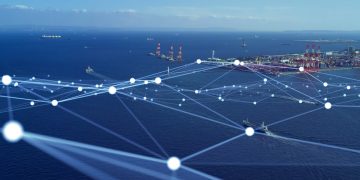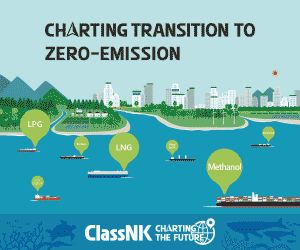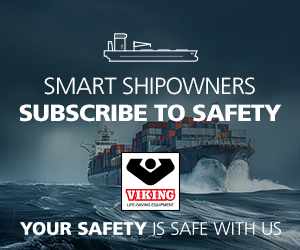The Swedish Club issued its 2020 Navigational Claims issue, focusing on a collision between two vessels, resulting to the fact that the lookout of the responsible seafarers at the time of the incident was improper, highlighting that the OOW is always responsible for reporting of any targets observed.
Accident type: Collision between two vessels Vessel(s) involved: Small general cargo vessel (referred to as “vessel A”), Vessel B Location: Baltic Sea
The Incident
The Vessel A, small general cargo, was voyaging during night hours in a busy area in the Baltic Sea, having good visibility, with winds being westerly at 3 Beaufort. The vessel was sailing in a speed of approximately 10 knots.
The equipment was set, with the S-band ARPA radar being in off centre place, with a range of 12 NM, north up, in relative motion mode, while the X-band radar was on standby. Both radars had similar blind zones as the masts were positioned close to each other on the ship’s upper bridge. The bridge equipment included an ECDIS, which the Master who was on the 8-12 watch was monitoring. A lookout was also on the bridge.
The Master’s watch ended and five minutes before midnight the Second Officer came to the bridge to begin his watch. Prior to leaving, the Master informed the Second Officer of the vessels which were astern and advised that they were being overtaken by a number of them. After the handover the Master left the bridge.
The Second Officer, informed of a vessel overtaking them on the portside, was not aware of another vessel (vessel B) which was also overtaking them, but on the starboard side. He switched the radar between centred display to off-centre several times. The lookout was on the port bridge wing.
Collision
The Second Officer was monitoring the ARPA S-band radar when he observed that a target astern on the starboard quarter, very close. The vessel B was rapidly approaching vessel A, and when it was noticed it was a minute from collision and only a few cables away. The officer turned around and looked out through the aft starboard bridge windows. Vessel B was almost on top of them.
In light of the upcoming collision, he tried to call the Master but was unbale to reach him. Therefore, he changed to manual steering and altered hard to starboard which was towards the overtaking vessel, and the vessels collided.
Sometime after the collision, the Master came to the bridge and saw that the engines were full ahead and the rudder was hard to starboard, but the vessel was not turning. The Master then, declined the engines to 60%.
After the collision, the vessel A was not moving, while vessel B had struck vessel A on the starboard side in way of cargo hold 2. After the vessel B was moved astern, the vessels disengaged. The Master contacted vessel B but the OOW on vessel B responded that they had only been involved in a near miss. After a while they admitted that they had been involved in a collision.
The Master saved the VDR. However, only the X-band radar was interfaced with the VDR and as that radar was in standby mode, radar screenshots of the developing close quarter situation had not been recorded by the VDR.
COLREGs
In light of the collision incident, the Swedish Club notes a number of COLREGs to explain how both vessels could have prevented the collision.
Rule 5 – Look out: Every vessel shall at all times maintain a proper look-out by sight and hearing, as well as by all available means appropriate in the prevailing circumstances and conditions, so as to make a full appraisal of the situation and of the risk of collision.
In this case, the OOW should have ensured that a proper lookout was conducted all around the vessel, in collaboration with the AB who was on watch at the current time, as it was the responsibility of the OOW.
It remains unknown why the lookout did not actively inform the OOW about the vessel overtaking on the starboard side.
Rule 7 – Risk of collision: (a) Every vessel shall use all available means appropriate to the prevailing circumstances and conditions to determine if risk of collision exists. If there is any doubt such risk shall be deemed to exist.
This may include running both radars. The ARPA radars should always be used for plotting all critical traffic. The X-band radar was the only radar recorded by the VDR, which means that the X-band radar should always be running when the vessel is on passage. It is also imperative that the OOW is aware of the bridge equipment’s limitations and is not over-reliant on any specific equipment.
Rule 13 – Overtaking: (a) Notwithstanding anything contained in the Rules of Part B, Sections I and II, any vessel overtaking any other shall keep out of the way of the vessel being overtaken:
(b) A vessel shall be deemed to be overtaking when coming up with another vessel from a direction more than 22.5° abaft her beam.
In this collision vessel B was overtaking vessel A and should have kept out of the way of vessel A.
Rule 17 – Action by stand-on vessel: (a)(i) Where one of the two vessels is to keep out of the way the other shall keep her course and speed.
(ii) The latter vessel may however take action to avoid collision by her manoeuvre alone, as soon as it becomes apparent to her that the vessel required to keep out of the way is not taking appropriate action in compliance with these rules.
(b) When, from any cause, the vessel required to keep her course and speed finds herself so close that the collision cannot be avoided by the action of the give-way vessel alone, she shall take such action as will best aid to avoid collision.
Vessel A was the stand-on vessel. The OOW on vessel A noticed vessel B only one minute prior to the collision. The OOW took the action that he thought would be effective However, it was too late to be able avoid the collision.
Lessons Learned
- Vessel B did not change course or adjust the speed at any point. Vessel A was the stand-on vessel and vessel B was the give-way vessel as it was overtaking vessel A on the starboard quarter. Vessel B would have been able to see the stern light of vessel A but not her sidelights.
- In line with rule 5 explained above, the proximate cause of this collision was poor lookout by those on the bridge of vessel B. Vessel A was the stand-on vessel as it was being overtaken. However, it is essential that the bridge team (the OOW and the dedicated lookout) maintain a proper 360° lookout, track all traffic around the vessel and use all navigation equipment available on the bridge.
- It is imperative that the OOW and lookout discuss all traffic concerned and that the lookout updates the OOW with any change in the movement of the targets. It is the responsibility of the OOW to ensure that the lookout is actively reporting targets observed.
- The X-band radar can, depending on the sea conditions, be better at detecting smaller targets compared to the S-band radar. However, it was on standby. Preferably both radars should be running all the time as with today’s modern ARPA radars there is no reason not to do this. Furthermore, there is an IMO requirement 2 on VDRs installed after 1 July 2014 that both ARPA radars should be recorded to the VDR which was not the case when the VDR was installed on vessel A.

































































